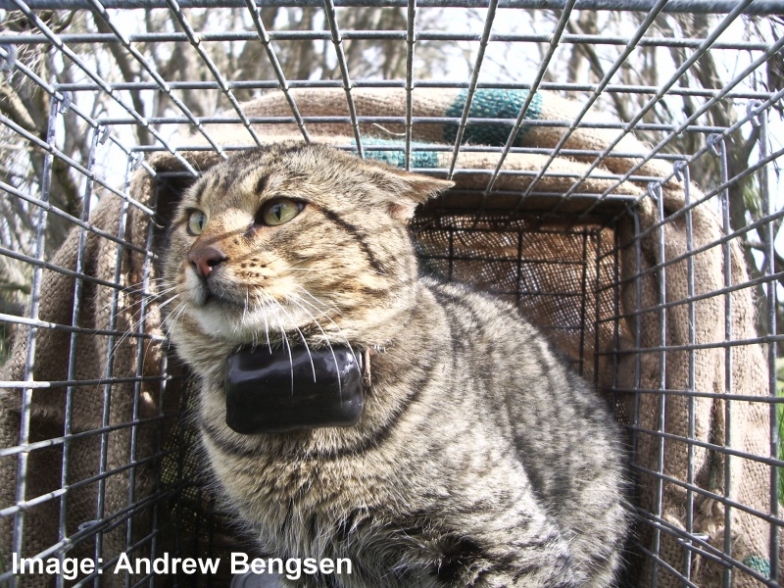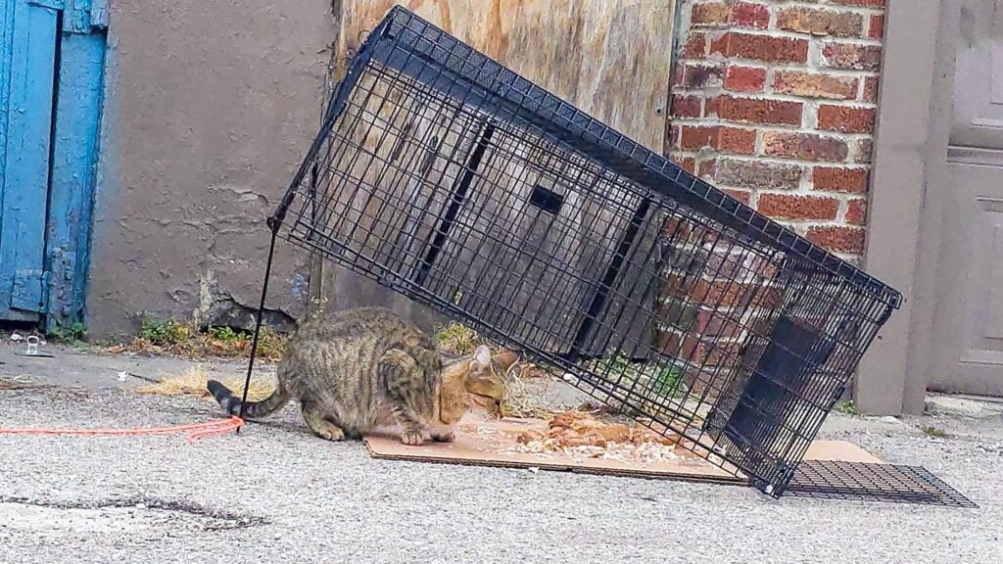Mastering the Art of Feline Capture
Welcome to the ultimate guide on mastering the art of feline capture! Whether you’re a seasoned trapper or a beginner looking to Catch your first wild cat, this article is packed with tips and tricks to help you safely and effectively trap feral felines.

Image Source: wildlifeanimalcontrol.com
Capturing a wild cat can be a challenging yet rewarding experience. With the right techniques and tools, you can successfully trap a feline without causing harm to yourself or the animal. So, let’s dive into the purr-fect techniques for safely catching cats!
One of the most important tools you’ll need for feline capture is a humane trap. These traps are designed to safely capture cats without causing them any harm. Make sure to choose a trap that is the right size for the cat you’re trying to catch, as too small of a trap can cause discomfort and too large of a trap can make it easy for the cat to escape.

Image Source: pestsmart.org.au
Before setting up your trap, it’s crucial to find the purr-fect location. Cats are creatures of habit, so look for areas where they are known to frequent, such as near feeding stations or under sheltered areas. Placing your trap in a quiet and secluded spot will increase your chances of successfully capturing a feline.
Now, let’s talk bait! Baiting your trap with irresistibly smelly food is key to luring in your feline target. Wet cat food, tuna, or sardines are all great options for baiting a trap. Be sure to secure the bait to the back of the trap so that the cat has to enter the trap fully to reach it.

Image Source: catsinaction.org
Once your trap is set up and baited, it’s time to play the waiting game. Patience is key when it comes to feline capture, so be prepared to wait for hours or even days before successfully trapping a cat. Check the trap regularly to ensure the cat is safe and comfortable while waiting to be captured.
When you finally have a feline in your trap, it’s important to handle the situation with care. Approach the trap calmly and quietly to avoid stressing out the cat. Covering the trap with a blanket can help to calm the cat and reduce its anxiety.
Transporting the trapped feline to a safe location is the next step in the feline capture process. It’s important to handle the trap gently to avoid agitating the cat. Once you’ve reached a safe location, carefully release the feline back into the wild.
Remember, feline capture is not only about trapping cats but also about ensuring their safety and well-being. By following these tips and techniques, you can master the art of feline capture and help to protect and preserve the feral feline population.
So, grab your humane trap, set up the purr-fect bait, and get ready to embark on your wild adventure in feral feline trapping! With the right tools and techniques, you can safely and successfully capture wild cats and make a positive impact on their lives. Happy trapping!
Sneaky Strategies for Trapping WildCats
Ah, the thrill of the hunt! There’s nothing quite like the excitement of capturing a wild feline, whether it’s a feisty feral cat or a majestic wildcat. But trapping these elusive creatures can be a tricky business, requiring a combination of patience, skill, and a bit of cunning. If you’re up for the challenge, here are some sneaky strategies for safely trapping wildcats.
First and foremost, it’s important to approach feline trapping with caution and respect. These animals may be wild, but they are still living beings deserving of care and consideration. Before setting out to trap a wildcat, make sure you have the proper permits and permissions in place, and always prioritize the safety and well-being of both the animal and yourself.
One sneaky strategy for trapping wildcats is to use bait and scent lures to attract them to your trap. Cats are notorious for their love of food, so setting out a tasty treat can be a great way to entice them into your trap. Some popular bait options include fish, chicken, or catnip. You can also use scent lures like catnip or the scent of a female in heat to attract male cats.
Another sneaky strategy for trapping wildcats is to use camouflage and concealment to hide your trap. Cats are incredibly observant and cautious creatures, so it’s important to make sure your trap is well-hidden and blends in with its surroundings. You can use natural materials like branches, leaves, and brush to camouflage your trap, or even set up a makeshift blind to hide yourself while you wait for the cat to enter the trap.
Setting up multiple traps in a strategic pattern can also be an effective way to increase your chances of capturing a wildcat. Cats are known for their curiosity and exploration, so setting up a series of traps in a trail-like formation can lead them right into your waiting arms. Just make sure to check on your traps regularly to avoid any unintended captures.
In addition to bait and camouflage, using motion-activated cameras can be a helpful tool for monitoring your trap and capturing valuable insights into the behavior of wildcats. These cameras can provide valuable information about the habits and movements of your target animals, helping you to fine-tune your trapping strategy for maximum success.
When it comes to actually trapping the wildcat, it’s important to use humane and ethical methods to ensure the safety and well-being of the animal. Live traps are a popular option for capturing wildcats, as they allow you to safely contain the animal without causing harm. Once the cat is safely trapped, it’s important to handle it with care and respect, and to seek the advice of a professional wildlife expert for further assistance.
In conclusion, trapping wildcats can be a challenging but rewarding endeavor for those with a passion for feline conservation. By using sneaky strategies like bait and scent lures, camouflage and concealment, setting up multiple traps, and using motion-activated cameras, you can increase your chances of safely capturing a wild feline. Remember to always prioritize the safety and well-being of the animal, and to approach feline trapping with caution and respect. Happy trapping!
Purrr-fect Techniques for Safely Catching Cats
Welcome to the ultimate guide on capturing a wild feline! In this article, we will explore some purrr-fect techniques for safely catching cats. Whether you are dealing with a stray cat in your neighborhood or a feral cat in the wild, these tips and tricks will help you trap the elusive feline safely and effectively.
When it comes to capturing a cat, safety should always be your top priority. Feral cats can be unpredictable and may become aggressive if they feel threatened. It is important to approach and trap them with caution to avoid any injuries to yourself or the cat. With that in mind, let’s dive into some purrr-fect techniques for safely catching cats.
1. Use a humane trap: When it comes to trapping a cat, using a humane trap is essential. Humane traps are designed to safely capture the cat without causing any harm. These traps typically have a door that closes once the cat enters, trapping them inside. Make sure to choose a trap that is appropriate for the size of the cat you are trying to capture.
2. Set up a feeding station: One effective technique for trapping a cat is to set up a feeding station near the trap. Cats are naturally curious and will be drawn to the smell of food. By regularly feeding the cat at the feeding station, you can lure them closer to the trap. Once the cat is comfortable eating at the station, you can then set up the trap nearby to capture them.
3. Use enticing bait: To increase the chances of trapping the cat, it is important to use enticing bait in the trap. Cats are known to be attracted to strong-smelling foods such as tuna or sardines. Place the bait at the back of the trap to ensure that the cat fully enters before the door closes. Remember to check the trap regularly to ensure the cat is not left trapped for an extended period of time.
4. Be patient: Capturing a cat can take time and patience. Feral cats are cautious by nature and may take some time to trust the feeding station and enter the trap. Be prepared to wait for a few days or even weeks before successfully capturing the cat. Avoid rushing the process and allow the cat to become comfortable with the trap before attempting to capture them.
5. Handle with care: Once you have successfully trapped the cat, it is important to handle them with care. Feral cats may be scared and aggressive when first captured, so approach them slowly and calmly. Use gloves to protect yourself from scratches and bites and avoid making sudden movements that may startle the cat. If possible, cover the trap with a towel to help keep the cat calm during transport.
By following these purrr-fect techniques for safely catching cats, you can successfully trap and remove feral cats from your neighborhood or the wild. Remember to always prioritize safety and handle the cat with care throughout the capture process. With patience and persistence, you can safely trap a wild feline and help protect both the cat and the community. Happy trapping!
Wild Adventures in Feral Feline Trapping
Welcome to the wild world of feral feline trapping! If you’re a Cat lover like me, you know that capturing a wild cat can be a challenging yet rewarding experience. Whether you’re trying to help a stray cat in need or simply enjoy the thrill of the hunt, there are plenty of tips and tricks to ensure a successful capture. In this ultimate guide, we’ll explore some wild adventures in feral feline trapping that will have you feeling like a true cat whisperer.
One of the most important things to remember when trapping a feral cat is to approach with caution. These wild creatures can be unpredictable and may lash out if they feel threatened. It’s important to move slowly and quietly, giving the cat plenty of space to feel comfortable. Setting up a safe and secure trap is also crucial, as you want to ensure the cat is captured humanely and without harm.
When setting up your trap, it’s important to choose a location that the cat frequents. Cats are creatures of habit, so they are likely to return to the same spot for food or shelter. By placing the trap in a familiar area, you increase your chances of a successful capture. Make sure to bait the trap with something irresistible to cats, such as tuna or wet food, to entice them to enter.
Once the trap is set, it’s time to play the waiting game. Patience is key when trapping a feral cat, as it may take some time for the cat to venture into the trap. Be prepared to wait for hours or even days, checking the trap regularly to see if you’ve caught your elusive feline friend. It can be a thrilling experience to finally see the trap door close, knowing that you’ve successfully captured a wild cat.
After capturing the feral cat, it’s important to handle them with care. Remember, these are wild animals and may be frightened or aggressive. Approach the trap slowly and calmly, speaking to the cat in a soothing voice to help calm their nerves. It’s a good idea to wear thick gloves to protect yourself from scratches or bites, as the cat may try to defend itself when approached.
Once you have safely captured the feral cat, it’s important to have a plan for what comes next. If you are able to, take the cat to a local animal shelter or rescue organization where they can receive proper care and attention. Many shelters offer spaying or neutering services for feral cats to help control the population and prevent further stray cats from roaming the streets.
If you are unable to take the cat to a shelter, consider reaching out to a local TNR (trap-neuter-return) program. These programs help trap feral cats, spay or neuter them, and then return them to their original location. This helps control the feral cat population while also ensuring the cats are healthy and well cared for.
In conclusion, trapping a feral cat can be a wild adventure that requires patience, skill, and a love for these majestic creatures. By following the tips and tricks outlined in this guide, you can safely and humanely capture a feral cat and help make a positive impact on their lives. So grab your trap, bait it with some tasty treats, and get ready for an exciting feline adventure!
how to catch a feral cat
